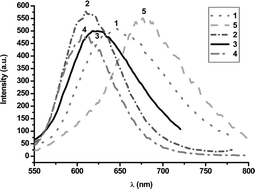Gold–thallium supramolecular arrays with 4,4′-bipyridine. Solvent induction of luminescent networks
Abstract
The reaction of [AuTl(C6Cl5)2]n with

* Corresponding authors
a
Departamento de Química, Universidad de la Rioja, Grupo de Síntesis Química de La Rioja, UA-CSIC, Complejo Científico Tecnológico, Logroño, Spain
E-mail:
eduardo.fernandez@dq.unirioja.es
b
Departamento de Química Inorgánica, Instituto de Ciencia de Materiales de Aragón, Universidad de Zaragoza-CSIC, Zaragoza, Spain
E-mail:
alaguna@posta.unizar.es
The reaction of [AuTl(C6Cl5)2]n with

 Please wait while we load your content...
Something went wrong. Try again?
Please wait while we load your content...
Something went wrong. Try again?
E. J. Fernández, A. Laguna, J. M. López-de-Luzuriaga, M. E. Olmos and J. Pérez, Dalton Trans., 2004, 1801 DOI: 10.1039/B404703F
To request permission to reproduce material from this article, please go to the Copyright Clearance Center request page.
If you are an author contributing to an RSC publication, you do not need to request permission provided correct acknowledgement is given.
If you are the author of this article, you do not need to request permission to reproduce figures and diagrams provided correct acknowledgement is given. If you want to reproduce the whole article in a third-party publication (excluding your thesis/dissertation for which permission is not required) please go to the Copyright Clearance Center request page.
Read more about how to correctly acknowledge RSC content.
 Fetching data from CrossRef.
Fetching data from CrossRef.
This may take some time to load.
Loading related content
